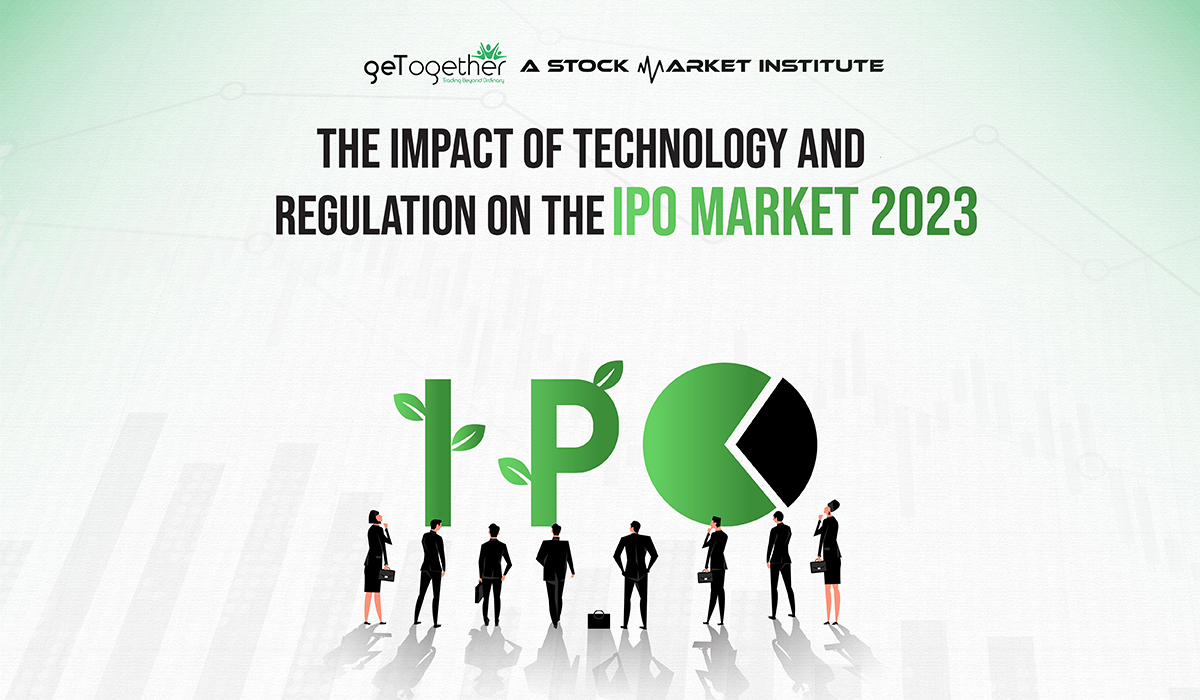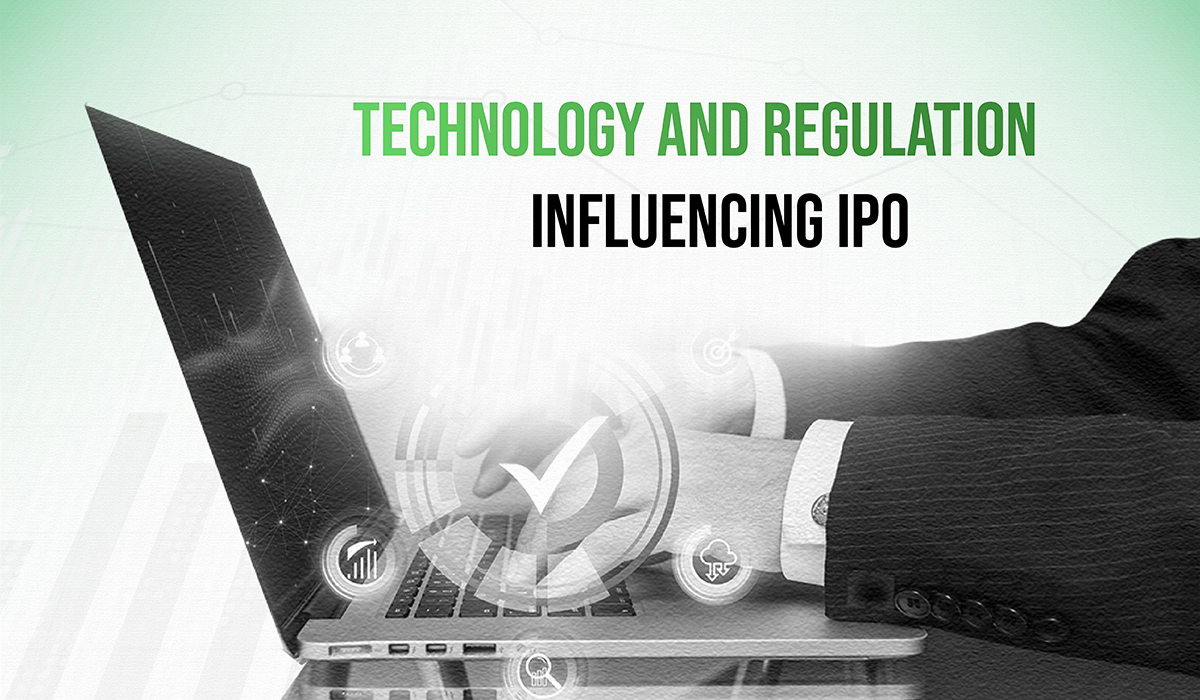The Impact of Technology and Regulation on the IPO Market 2023


INTRODUCTION
Companies can use the IPO process to raise capital and go public, giving investors a chance to participate in their growth potential. However, the interplay of technological advancements and regulatory frameworks is constantly influencing the IPO landscape. In this article, we will investigate the ways in which this ecosystem’s strategies, valuations, and investor landscape are influenced by technology and regulation in 2023.
The Initial public offering market has seen critical changes throughout the long term, driven by mechanical developments and administrative changes. Companies’ approaches to initial public offerings have changed as a result of these developments, affecting investors as well as the market as a whole. Let’s take a look at the most important points and see how technology and regulations are changing this landscape.
EVOLUTION OF IPO
The IPO market has changed over time, moving away from more conventional approaches and toward more contemporary ones. Previously, investment banks played a crucial role in the execution of underwritten offerings, which were the primary means by which Initial public offerings were carried out. Direct listings and Special Purpose Acquisition Companies (SPACs) are examples of alternative strategies that have emerged as a result of technology’s disruption of this conventional model. Companies looking to go public, benefit from the adaptability and cost-effectiveness of these more recent options.
TECHNOLOGY ANA REGULATIONS INFLUENCING IPO

Technological impact:
Technology’s Impact on the Initial Public Offering Market Technology has a significant role. Organizations influence innovative headways to smooth out different parts of the Initial public offering process, including financial backer correspondence, an expected level of investment, and administrative consistence. Online stages and computerized devices empower organizations to arrive at a more extensive financial backer base and improve the financial backer onboarding process.
Technological advancements have introduced new valuation dynamics in the this market. Companies with innovative business models and disruptive technologies tend to attract significant investor interest, potentially leading to higher valuations. Moreover, analyzing a company’s fundamental data enables investors to make more informed decisions regarding IPO investments, impacting the perceived value of a company.
Regulatory impact:
The market for initial public offerings is significantly impacted by regulatory frameworks and is regulated by SEBI (The Securities and Exchange Board of India). In order to safeguard investors and preserve the integrity of the market, regulations are established by governments and regulatory bodies. For businesses planning to go public, it is essential to adhere to these regulations. However, complexities and costs that may impede the IPO procedure can also be introduced by regulations. A healthy IPO ecosystem requires finding the right balance between protecting investors and facilitating capital formation.
Recently by SEBI, The new regulations will control how companies price their shares, use the money they get from investors, how much of their stake promoters can sell during an initial public offering (IPO), and when anchor investors can sell the stakes they bought before the IPO.
Challenges and Opportunities:
While technology and regulations bring numerous advantages to the IPO market, they also present challenges. Companies need to navigate complex regulatory landscapes and ensure compliance, which can be time-consuming and costly. Additionally, technological advancements introduce cybersecurity risks and the need for robust data protection measures. However, these challenges also open doors to opportunities for innovative solutions and service providers to support this ecosystem.
Future trends:
Looking ahead, we anticipate several trends shaping the IPO market in the future. Continued advancements in technology will likely drive further automation, efficiency, and transparency in this process. Regulatory frameworks will adapt to keep pace with technological developments, striking a balance between oversight and innovation. The investor landscape will continue to evolve, with retail investors exerting a more significant influence on IPO dynamics. Furthermore, we may witness the emergence of new fundraising models and alternative platforms that cater specifically to IPOs.
CONCLUSION
Technology and regulation have become integral to the this market, transforming the way companies go public and shaping the investor landscape. The impact of technology can be seen in streamlined processes, increased accessibility, and new valuation dynamics. Simultaneously, regulations provide a framework for investor protection and market integrity, albeit with potential challenges. Companies,
investors and market participants must adapt to these changes and take advantage of the opportunities presented by the evolving IPO landscape as we move into 2023 and beyond.
FAQs
1: What is an IPO?
An Initial Public Offering, refers to the process through which a private company offers shares to the public for the first time, becoming a publicly traded company.
2: How does technology influence the IPO market?
Technology influences the IPO market by introducing new methods of going public, improving efficiency in processes, enabling broader investor access, and shaping valuation dynamics.
3: What role do regulations play in the IPO market?
Regulations are essential in the this market to protect investors and ensure market integrity. They provide guidelines and compliance requirements that companies must adhere to when going public.
4: What are direct listings and SPACs?
Direct listings and SPACs are alternative methods for companies to go public. Direct listings allow existing shareholders to sell their shares directly to the public, bypassing the traditional underwriting process. SPACs are blank-check companies that raise capital through an IPO with the intent to acquire an existing company.
5: How is the investor landscape changing in the IPO market?
The investor landscape is changing with the increasing participation of retail investors and the democratization of investing. Technology has made it easier for retail investors to access IPOs and invest alongside institutional investors.
